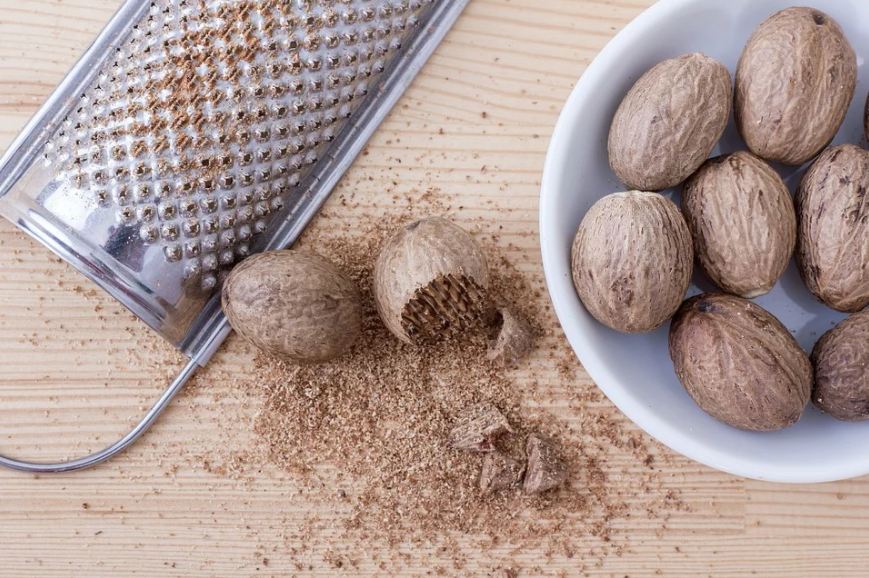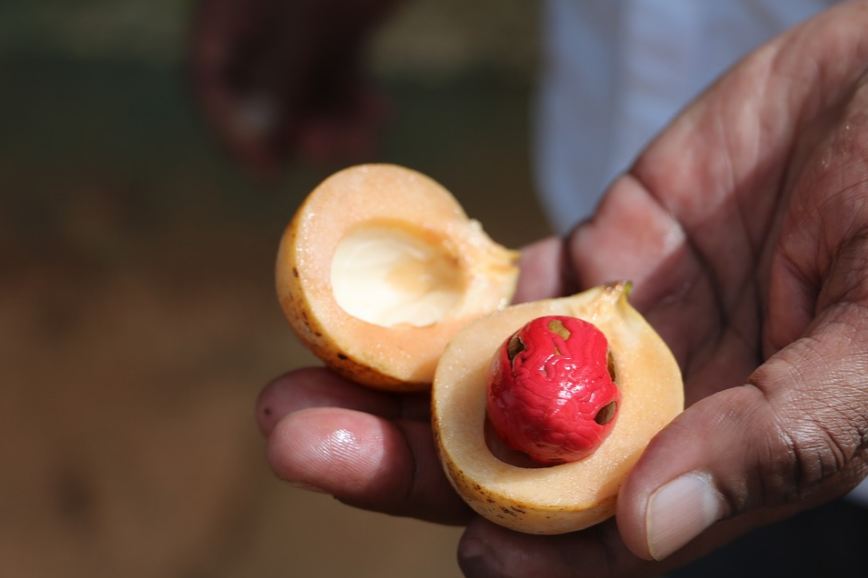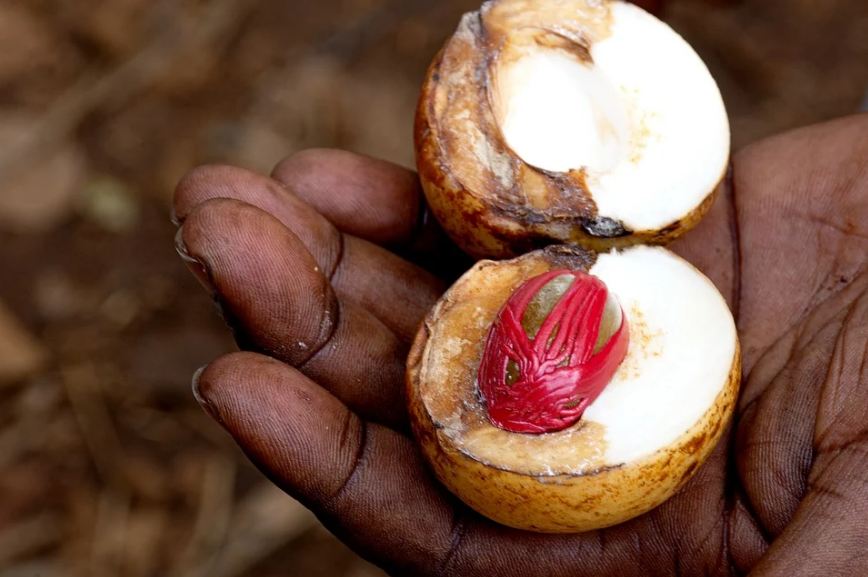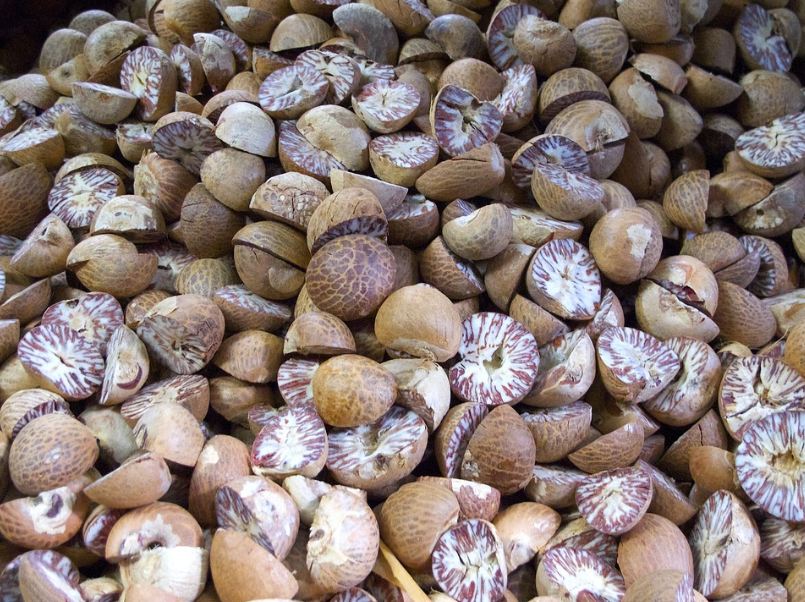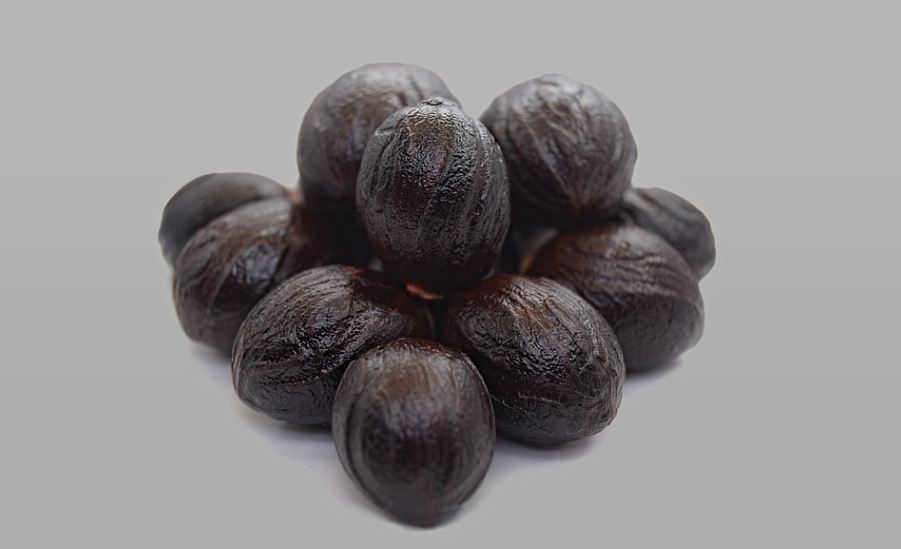Nutmeg, a spice, is a seed of a tree with the same name and scientifically called Myristica fragrant. This tree is native to Indonesia, where it is cultivated for two of the most popular spices called nutmeg and mace. It is the inner part of the seed that is used as nutmeg, while the other spice, mace, is the red covering of the seed, which appears like lace.
Introduction to Nutmeg
Nutmeg is considered an autumn spice that is usually used in various desserts and beverages that are popular in fall. You must have heard about nutmeg being used in several savory dishes. It is an important ingredient of butternut squash soup. Moreover, this spice also goes well with cheese and cream-based recipes.
Although nutmeg is in the form of a seed, it is mostly used as a ground spice. Taste-wise, nutmeg gives a warm, nutty flavor that enhances the taste of desserts. It is also added to mulled wine, chai tea, and eggnog. This spice is characterized by a distinctive pungent fragrance.
How is Nutmeg Made into a Seasoning?
The nutmeg seeds of the nutmeg tree are sun-dried time and again for about six to eight weeks. This process leads to the shrinking of the nutmeg in a way that the inner part of the seed detaches from its hard coat. An indication of whether the nutmeg seeds are dried enough is to shake the shells and see if they rattle. The outer coat is then separated, which is used as mace, and the nutmeg is then sold as a whole or ground spice.
History of Nutmeg
Nutmeg is said to have very deep-rooted historical narratives dating back to the 1st century AD. Nutmeg spice was considered a valuable spice and was commonly used as a popular currency for trade. It is also claimed to be the cause of a war wherein the Dutch conquered the Banda Islands. Among the numerous resultant consequences of this war, the establishment of the Dutch East India Company was one of the most historic ones.
Difference between Nutmeg and Mace
Despite being the seed of the same nutmeg tree, mace and nutmeg differ from each other. When sun-dried, the seeds yield two components: the inner part of the seed and its hard coat. Mace is the seed’s outer shell, which is red, while the nutmeg is the remaining pit of the seed. Nutmeg can be used as a whole or ground spice.
Mace has a stronger taste than nutmeg and is more towards the spicier end of the spectrum. It can be said that the taste of mace is somewhat similar to the taste of pepper and cinnamon combined. Although nutmeg and mace come from the same tree, they are not usually used together in a dish.
Culinary Uses of Nutmeg
Nutmeg as a Spice
As compared to mace, which is mostly used as a delicate flavoring that also gives a saffron-like color to the dish, nutmeg is used in desserts because of its sweeter flavor. It can easily be found in supermarkets in the ground, whole, or grated form. You can also ground the whole nutmeg at home with the help of the grating tool.
It is a popular spice in its native country, Indonesia, where it is mostly added to soups, such as Soto, Bakso, and Sup kambing. It is also commonly used in meaty dishes, such as beef stews and ribs with tomatoes. Some versions of European-styled meat dishes also use nutmeg as the main spice, including Bistik (beef steak), BistikLidah (beef tongue steak), and Rolade (minced meat roll).
Indian cuisine also diligently relies on this spice. In Malabar, Kerala, grated nutmeg is an essential ingredient for adding to meaty dishes. “Garam masala” is also one of the popular spices in Asian cuisines that use nutmeg in whole or ground form.
As far as European cuisines are concerned, nutmeg is a special ingredient of several potato and meat dishes. It is also popularly added to soups and baked desserts. Rice pudding is one of the popular most European dishes which uses nutmeg. Traditionally, this spice is an essential ingredient of eggnog, mulled wine, and cedar.
Nutmeg as a Fruit
The flesh of the nutmeg seed is also used to make jam and candy. Nutmeg flesh also called manisan (sweets), dipped in sugar syrup, is a popular candy in Indonesia. Nutmeg seed flesh dried and coated with dry sugar is used as a topping in a traditional Penang cuisine. Nutmeg juice is extracted by blending the rind and boiling it in sugar syrup.
Essential Oil

Nutmeg Butter
Nutmeg goes through nut expression to obtain nutmeg butter, which is commonly used instead of cocoa butter. It is often combined with cottonseed or palm oil to be used as an effective industrial lubricant.
A Guide to Buying and Storing Nutmeg
- Nutmeg can be easily located in supermarkets near you in whole or ground form.
- As compared to the whole, the ground nutmeg might lose its fragrance and taste more quickly. So, if you want to buy it in large quantities, it is best to buy the whole nutmeg.
- No matter which forms of nutmeg you get, it is advised to store it in an air-tight container in a dark and dry place.
- If you store nutmeg away from direct sunlight and moisture, it can last up to six months without losing its flavor and fragrance.
- A pro tip is to get the whole nutmeg in bulk and store it properly. Whole nutmegs can be stored for an indefinite time. You can ground the whole nutmeg whenever you require.
Some Common Traditional Recipes that Use Nutmeg
- Pumpkin pie
- Alfredo or bechamel sauce
- Custard pie
- Spiced apple juice
- Nutmeg cookies
Health Concerns Regarding Nutmeg
Nutmeg is also used as a smoked drug in numerous cultures, such as in some parts of India. High quantities of nutmeg are claimed to have hallucinogenic properties that can alter thought processes. Although there are not many deaths reported to have resulted from ingesting high doses of nutmeg, its overdose is considered extremely toxic.
The potential high consumption of nutmeg is far beyond the quantities used in the culinary scenario. Nevertheless, caution in consuming nutmeg is highly advised. Deliberate ingestion of high quantities of nutmeg in children has shown detrimental effects, including nutmeg poisoning.
Conclusion
Nutmeg is quite a fragrant spice that is closely related to mace. Although both of these spices come from the same tree’s seed, they both are different from each other. Nutmeg is considered an essential ingredient in various traditional cuisines such as pumpkin pie, iced coffee or tea, and eggnog. However, caution is advised in the use of nutmeg as it can be potentially dangerous if ingested in high quantities.

